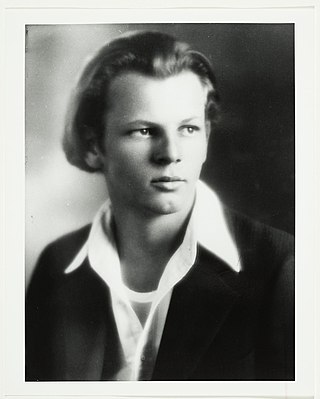
Paul Jackson Pollock was an American painter. A major figure in the abstract expressionist movement, Pollock was widely noticed for his "drip technique" of pouring or splashing liquid household paint onto a horizontal surface, enabling him to view and paint his canvases from all angles. It was called all-over painting and action painting, since he covered the entire canvas and used the force of his whole body to paint, often in a frenetic dancing style. This extreme form of abstraction divided the critics: some praised the immediacy of the creation, while others derided the random effects. In 2016, Pollock's painting titled Number 17A was reported to have fetched US$200 million in a private purchase.

André Derain was a French artist, painter, sculptor and co-founder of Fauvism with Henri Matisse.

Lucian Michael Freud was a British painter and draughtsman, specialising in figurative art, and is known as one of the foremost 20th-century English portraitists. He was born in Berlin, the son of Jewish architect Ernst L. Freud and the grandson of Sigmund Freud. Freud got his first name "Lucian" from his mother in memory of the ancient writer Lucian of Samosata. His family moved to England in 1933, when he was 10 years old, to escape the rise of Nazism. He became a British naturalized citizen in 1939. From 1942 to 1943 he attended Goldsmiths College, London. He served at sea with the British Merchant Navy during the Second World War.

Oswald Achenbach was a German painter associated with the Düsseldorf school of painting. Though little known today, during his lifetime he was counted among the most important landscape painters of Europe. Through his teaching activities, he influenced the Kunstakademie Düsseldorf. His brother, Andreas Achenbach, who was twelve years older, was also among the most important German landscape painters of the 19th century. The two brothers were humorously called "the A and O of Landscapes".

Color field painting is a style of abstract painting that emerged in New York City during the 1940s and 1950s. It was inspired by European modernism and closely related to abstract expressionism, while many of its notable early proponents were among the pioneering abstract expressionists. Color field is characterized primarily by large fields of flat, solid color spread across or stained into the canvas creating areas of unbroken surface and a flat picture plane. The movement places less emphasis on gesture, brushstrokes and action in favor of an overall consistency of form and process. In color field painting "color is freed from objective context and becomes the subject in itself."

Frank Jeffrey Edson Smart was an expatriate Australian painter known for his precisionist depictions of urban landscapes that are "full of private jokes and playful allusions".
Paul Henry was an Irish artist noted for depicting the West of Ireland landscape in a spare Post-Impressionist style.

Edward Bird was an English genre painter who spent most of his working life in Bristol, where the Bristol School of artists formed around him. He enjoyed a few years of popularity in London, where he challenged the dominance of Sir David Wilkie in the genre painting field, before moving on to history painting, specialising in battle scenes.
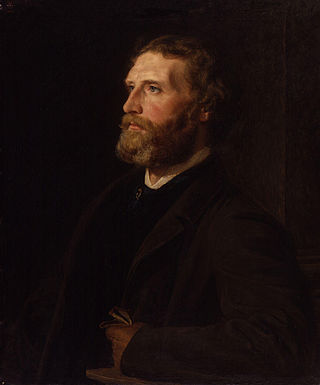
Sir Frederic William Burton was an Irish Victorian painter and curator who was the third director of the National Gallery, London for 20 years from 1874.

George Barret Sr. was an Irish landscape artist known for his oil paintings and watercolours. He left Ireland in 1762 to establish himself as an artist in London and quickly gained recognition to become a leading artist of the period. He exhibited at the Society of Artists of Great Britain and was able to gain patronage from many leading art collectors. Barrett with other leading members left the Society in 1768 to found the Royal Academy, where he continued to exhibit until 1782.
Patrick Hickey was an Irish printmaker, painter, artist and architect who founded the Graphic Studio Dublin in 1960.

Patrick Tuohy was an Irish portrait, narrative, and genre painter.
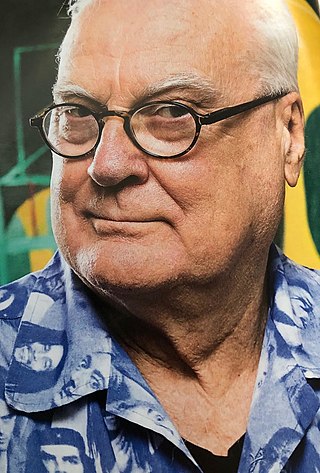
Gareth Sansom is an Australian artist, painter, printmaker and collagist and winner of the 2008 John McCaughey Memorial Prize of $100,000.
Le petit picador jaune is an oil on wood painting by the Spanish artist Pablo Picasso, which he created in 1889 at the age of eight. It is considered to be the earliest known surviving work by the artist. The painting is a colourful representation of a Spanish bullfight, a subject which Picasso repeatedly returned to throughout his career.
Lilian Davidson ARHA was an Irish landscape and portrait artist, teacher and writer.
Mabel Young was a British artist, who spent her career painting in Ireland.
Doreen or Dairine Vanston was an Irish landscape artist who worked in a Cubist style.
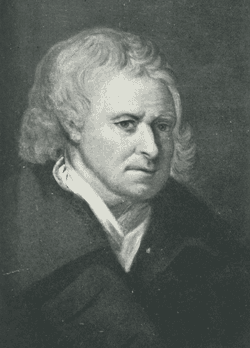
John Henry Campbell was a landscape painter.
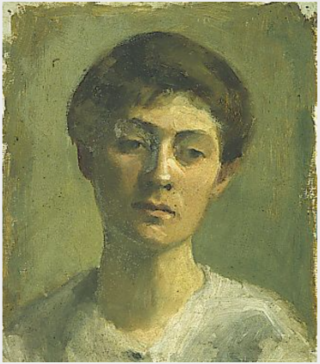
Clare Marsh was an Irish still life and portrait artist.
Peter Collis was an English landscape and still life artist who moved to Ireland and produced almost all his work there.












